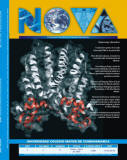NOVA por http://www.unicolmayor.edu.co/publicaciones/index.php/nova se distribuye bajo una licencia Reconocimiento No Comercial- Compartir igual
Así mismo, los autores mantienen sus derechos de propiedad intelectual sobre los artículos,
Declaración de privacidad.
Los nombres y las direcciones de correo electrónico introducidos en esta revista se usarán exclusivamente para los fines establecidos en ella y no se proporcionarán a terceros o para su uso con otros fines.
Frequency of Nosocomial Enterobacterial b-lactamase-Producing of Extended Spectrum, Cumana, Venezuela
This study aimed to evaluate the frequency of nosocomial enterobacterial b-lactamase producing extended spectrum in patients confined in the Hospital Universitario “Antonio Patricio de Alcalá, Cumana, Venezuela, during the period September-November 2005. The production of b-lactamases and extended spectrum in vitro antimicrobial susceptibility were determined by the method of double-disk synergy and disk diffusion. It took 35 bacterial isolates and the increased number of nosocomial infections occurred in the intensive care unit and neonatology with 13/35 (37.15%) and 9 / 35 (25.72%) cases respectively. 51.42% of positive cultures occurred in samples of secretions. Klebsiella pneumoniae showed a frequency of 20/35 (57.14%). Only 27/35 isolates (77.14%) produced β-lactamases and extended spectrum Klebsiella pneumoniae was the most common species in the production of these, with 14/35 (40.0%). Enterobacteriaceae expressed greater percentage of resistance to ceftazidime (77.77%), cefotaxime (70.37%) and cefepime (40.74%). K. pneumoniae and E. coli, showed 59.25% resistance to amoxicillin / clavulanate. All showed 100% sensitivity to carbapenems.
Long periods of hospitalization are major risk factors for acquiring nosocomial infections and the emergence of strains producing b-lactamases extended spectrum result from misuse of broad-spectrum cephalosporins, which poses significant challenges for the need to use carbapenems with the risk of exerting a selective pressure which in time will cause future resistance.









